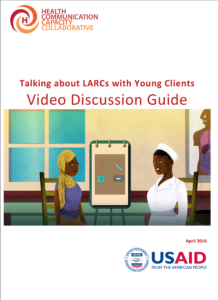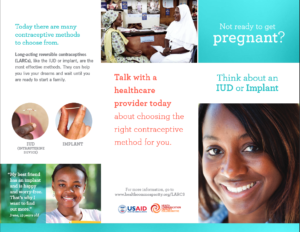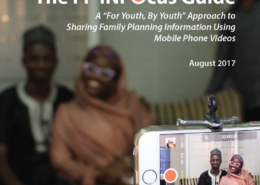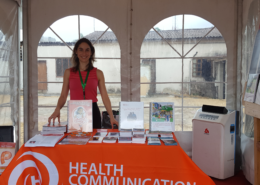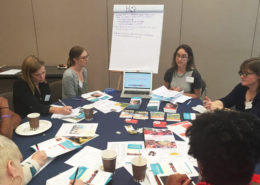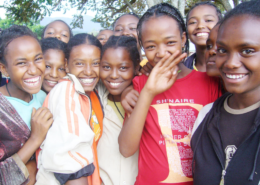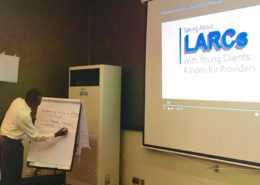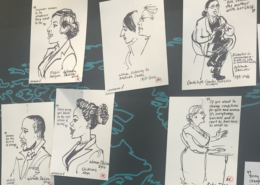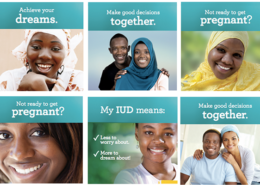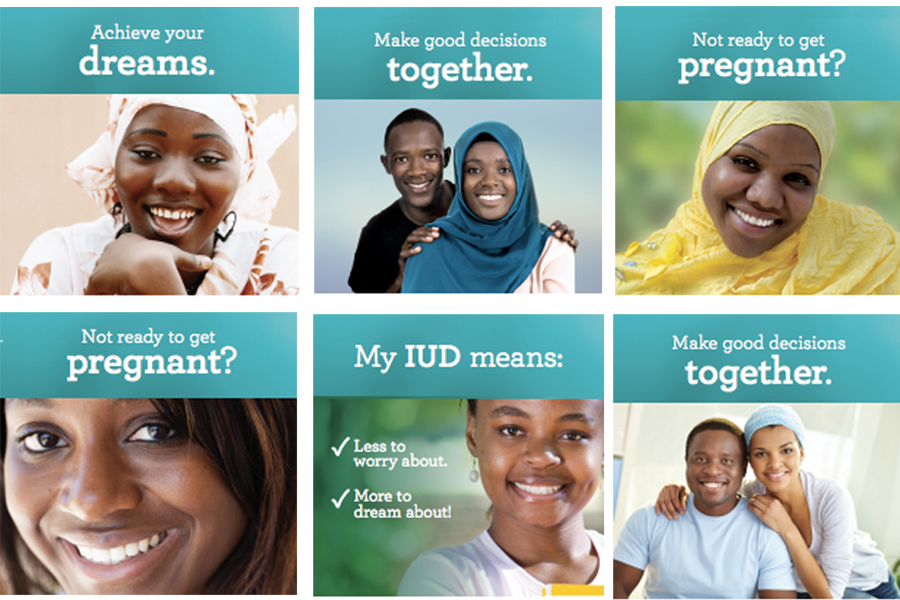Long-acting reversible contraceptive methods (LARCs) – such as the intrauterine device (IUD) and the implant – are highly effective, convenient and cost-effective. However, their uptake among young women is low.
Through rapid assessments, an evidence scan and a Springboard discussion, HC3 identified key barriers to LARC uptake among youth. Barriers related to clients attitudes and providers attitudes. Health care providers are often unaware that LARCs are safe and effective for all women of reproductive age, including adolescents that have not yet had children. Youth’s own beliefs that LARCs are for older, married women and mothers or that LARCs can cause health problems are often reinforced by providers, which further hampers LARC acceptance for and by youth.
To address these barriers, HC3 created adaptable social and behavior change communication (SBCC) materials to help increase access to LARCs for youth ages 15 to 24. The collection can be used by family planning program managers who wish to expand the contraceptive method mix available to youth, encourage youth-friendly contraceptive counseling or increase LARC acceptance among youth. The materials were pretested with youth and providers in Malawi and Nigeria and revised according to feedback.
For a quick introduction to all the materials, see this three-minute overview video that describes how the materials can be adapted, and how organizations can request and incorporate the materials in their own youth-focused contraceptive work.
The final materials were launched in a webinar, and include:
- A three-minute animated video aimed for providers who may counsel young women about modern contraceptive methods
- A video discussion guide to help program managers or health facility senior staff facilitate deeper dives into the video’s key messages, including provider bias
- A take-home brochure that provides information on LARCs for dissemination to youth in clinic or non-clinic settings: one with photos, one with stills from the video
- A series of posters encouraging youth to find out more information on LARCs, and consider them as an appropriate method for them
The entire suite of materials is adaptable to specific contexts and interventions needs. Program staff wishing to use the tools in their own work can request the editable files here (ou en français ici). HC3 also created the FP INFOcus Guide, a tool that encourages young sexual and reproductive health champions between the ages of 18 and 24 to create and promote short videos that share contraceptive knowledge and model key skills – all using their mobile phones.

